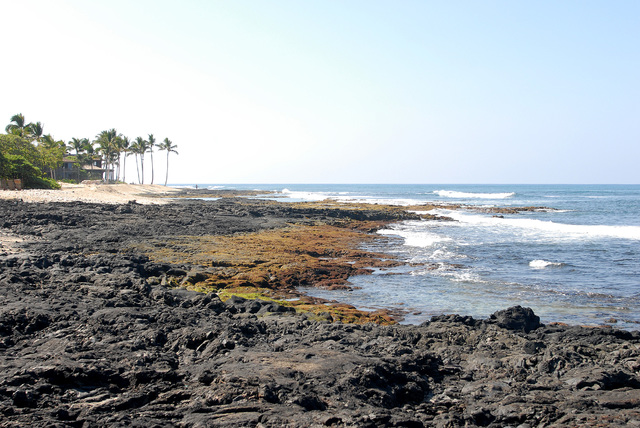KAILUA-KONA — The Board of Land and Natural Resources earlier this year approved a marine reserve at Kaupulehu, enacting a 10-year rest period and creating a no-take area spanning a 3.6-mile stretch of West Hawaii coastline.
The decision produced a divergence of opinion within the Native Hawaiian community as it was met with substantial resistance, particularly from Palikapu Dedman of the Pele Defense Fund, who asserted the ban was a violation of his religion and Hawaiian gathering rights.
But the push for the rest period was initiated by the Kaupulehu Marine Life Advisory Committee, which is heavily comprised of Native Hawaiians whose ancestors subsisted on the waters and their contents for generations. The committee holds an opposite perspective on the best way to preserve traditional Hawaiian practices.
“What has been protected by case law and constitutional law is the traditional and customary practice of harvesting,” explained Hannah Kihalani-Springer, a member of the committee whose family history at Kaupulehu stretches back to a time preceding even that of King Kamehameha. “We are bringing forward the traditional and customary practice of caring for (the resource), which has not been tested in the same way that the gathering rights have been tested. In a sense, we are bringing forward the right to care.”
Kihalani-Springer — along with Aunty Lei Keakealani, Vern Yamanaka and others — spent nearly two decades accumulating scientific data on marine life in the area to build a conservation proposal that could stand up to scrutiny and ultimately navigate its way though the political process into reality.
Perceptions have circulated across the island that resorts and developments had their fingerprints on the decision, allegedly because of a desire to restrict local access and maintain the area for the recreational use of their visitors and inhabitants.
But Yamanaka said the increased access of all people, visitors and locals alike, that came with the construction of the highway, as well as the public access requirements that arrived with the resorts and developments, are precisely the reasons the marine reserve was necessary.
He cited extensive scientific studies performed over decades, which have shown a steady decline in marine life species that once heavily populated the waters at Kaupulehu.
“It used to be no one came on to the land to take without permission,” Yamanaka said. “Even when you got permission, you lived by the rules. Once public access occurred, that went out the window. There was unlimited take.”
The unlimited take has depleted several types of fish, particularly those with both consumption and ornamental value, some of which also happen to require longer recruitment periods to sufficiently repopulate.
Kala, a unicorn fish, have vastly different reproductive cycles depending on their size. The larger types can produce 1,000 times more offspring than their smaller counterparts. It is this type of conservation information, along with general replenishment, Kihalani-Springer said will add value to the decision to enact a 10-year rest period.
“It will allow for us to learn more about what the episodes are for each species,” she said. “Diversity is the objective, both culturally for the flavors and the other lifestyle attachments that we have, and for the ecosystem. A diverse ecosystem is a more vibrant, healthier ecosystem. First you feed the fish, then the fish feed you.”
Kihalani-Springer added she respects the concerns of Dedman, who told West Hawaii Today he plans to fish despite the rest period, and other Native Hawaiians who feel they are being unfairly punished for environmental consequences resulting in large part because of the United States’ annexation of Hawaii and the subsequent boom in tourism and development.
But, she said, everyone must make sacrifices now to preserve the area’s natural resources.
“Palikapu has been an outspoken advocate for social and environmental justice through his work with the Pele Defense Fund,” Kihalani-Springer said. “That was about the rights of the collective. This, we are narrowing the focus down to a particular place rather than the expanse of the whole island.”
Yamanaka echoed her sentiment.
“Palikapu, I have great respect for his family, and I have a lot of respect for where he comes from,” Yamanaka said. “But in my work, in these type of management areas like Kaupulehu, I listen first to the families of (the area). What people from the outside don’t realize is the sacrifice these families are making. Their families are going to lose a generation of experience and being able to fish this resource, because they know it has to be done.”






